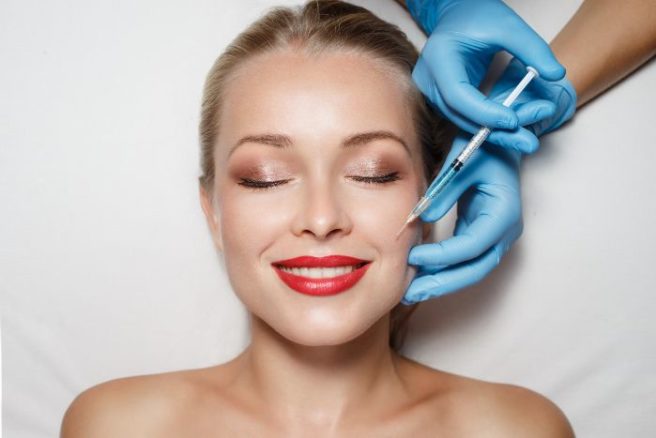
Botox and bum lifts: The rise of the Instagram celebrity plastic surgeon
By Shauna Coen
Over the past year, many plastic surgeons have concentrated on a new social media trend where they live-stream operations to hundreds of thousands on Instagram and Snapchat.
With follower numbers and page views that some social influencers can only dream about, are plastic surgeons becoming the new celebrities?
Besides all the blood and scalpels, this trend has some outcomes that are definitely a cause for concern. It’s known that plastic and cosmetic surgeons have advertised their services for years online but now they’re increasing their engagement ratings by posting the shocking step-by-step details of procedures from the operating room.
People can now follow patients, many of whom are celebrities, into the surgery room from the comfort of their own home.
Their profiles are essentially their portfolios, filled with hundreds of before and after photos of everything from botox to tummy tucks and breast augmentations.
I admit, I look to find a body type like mine that I can identify with and become very engrossed in the transformation.
What Calgary plastic surgeons may see as a tool for transparency and a way of educating people on surgery, can manifest into an unhealthy obsession where I’m considering how long it would take to save up enough for a boob job. Luckily for me, the notion quickly passes.
However, for some women, particularly the younger female generation, seeing these completely unrealistic photos and thinking ‘this is what I want to look like’ causes serious issues for their well-being and self-worth.
Social media is changing the taboo of plastic surgery. Before the rise of the internet, plastic surgery was something people underwent but never spoke about or it was seen as something just celebrities got.
Part of the taboo came from the fact people didn’t know much about it. Nowadays, women are engaging with these viral videos, they’re able to ask questions directly regarding their suitability for a chosen procedure and can even get a ballpark price.
This new trend is normalising cosmetic and plastic surgery and it’s benefiting no one but the medical practitioners. Instagram isn’t just a way to keep up to date with friends and family anymore. You can now easily book a nose job quicker than you’ll get a reply from your girlfriend about the antics of Saturday night.
With more and more celebrities opening up about their cosmetic surgeries and tagging their plastic surgeon in their posts, is it any wonder girls as young as 18 are saving up for lip fillers?
According to the International Master Course on Aging Science (IMCAS) figures released in February, spending on cosmetic surgery has jumped by eight percent in a year, now totalling $10.7bn (€8.6bn.) Has the normality of plastic surgery on social media sparked this increase?
These figures are expected to increase by another 9% next year and are likely to more than double in the seven-year period from 2014 to 2021.
In today’s world of apps and social media influencers, people have become more critical of their appearance. Plastic surgeons have played on that. You have to give them credit for their online marketing tactics.
They have amassed thousands of followers on Snapchat and Instagram, expertly using the platforms to promote their own businesses and their industry.
Take Dr Ashkan Ghavami for example, he has on 292 thousand followers on Instagram. He takes time to answers their questions and allows his lengthy list of celebrity clients to gush over him and his work online.
He’s a celebrity in his own way too. It’s not just images and videos of surgeries, followers of Dr Ghavami will also get glimpses of his dinners, drinks with colleagues and his vacations (He was in Ireland last year.)
This is another clever trick, humanising themselves and allows them to fit nicely in between the Snapchat stories of our friends and social influencers we follow.
Typically these famous plastic surgeons are middle-aged and men. In order to attract the millennials who are fuelling the plastic surgery trend, their off-duty lifestyles must relate to what young people are familiar with.
But where are the videos of the complications? Where are the cameras when the patient’s body rejects the implants? Or the video of the patient crying over their permanent bee-stung lips?
Potential patients are not getting a full picture of the risks involved. There are numerous risks associated with going under the knife, such as infection, nerve injuries, scarring or blood clots.
The videos may be giving some people false illusions of what surgery is actually like.
They are downplaying the seriousness of plastic surgery. By filming short videos it is just not possible to give the whole picture and the magnitude of surgery. Not forgetting to mention the idea of a phone in surgery could compromise the surgeon’s work.
Some surgeons say that filming videos of procedures can be educational and helpful and can be used for training purposes. There is an argument that videos can provide vital information to potential patients.
However, with a large number of young people using the social platforms, the risks, as well as the benefits, need to be highlighted. It needs to be handled responsibly.
The new trend is very controversial and with the ever-increasing rise in the use of social media, the phenomena of sharing videos of surgeries on social media aren’t disappearing any time soon. The popularity of plastic surgeons will continue to rise.
With an altered perception of beauty, we’re heading for a self-image crisis.








